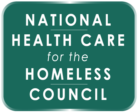Trauma-Informed
Organizations
Research: Trauma-Informed Organizations
Systems-Wide Understanding of TI Care
Staff Experiences
- Create a written policy that allows for adequate time outside of clinical/office duties for both direct service staff and support staff to attend trainings specific to trauma.
- Identify a staff person to lead a thorough review of each policy against the principles of TI care and reflect an understanding of trauma survivors’ needs, strengths, and challenges, and adjust as needed. The lead works with the TI Committee to enlist volunteers to assist in completing this task.
- This occurs on an annual basis (at minimum) to identify whether they are sensitive to the needs of trauma survivors.
- A report on findings is shared with all staff and the Board of Directors.
- An invitation to be involved in this review is sent to all staff.
- Develop a written policy for monitoring and evaluating the effectiveness of TI care.
- Develop a written policy for staffing patterns that supports employees in receiving professional development.
- Create a written policy for hiring peers (e.g., community health workers, peer support specialists.
- Develop a written policy confirming that organizational activities (e.g., performance evaluations, supervision, and team meetings) are meant to support staff, as opposed to being purely evaluative or directive.
- Identify a staff person and schedule frequent communication about the program’s “trauma initiative(s)” through different mediums. Tailor communication to different audiences, including consumers, all staff, board members, and the larger community.
- Work with organizational leadership to determine when and how to communicate to all staff to ensure that the work is coordinated and supported.
- Train staff to analyze communications to assess for TI language (e.g. strengths-based, non-judgmental, self-care focused, etc.).
- Identify a staff person to lead a review of employee materials (e.g., job advertisements, interview questions, orientation process, job descriptions, and employee handbook) to ensure TI language.
- Job descriptions should accurately articulate the tasks of the job and TI work-related expectations.
- Develop a written statement on the organization’s commitment to understanding trauma.
- Develop a written statement that acknowledges the program’s commitment to seek to hire (or identify among current staff) trauma “champions,” or individuals who are interested and seek knowledge about trauma and its effects; who prioritize trauma sensitivity in service provision; who communicate the importance of trauma to others in their work groups; and who support TI changes in service delivery.
- Create a communication plan to keep all staff, board members, consumers, and the larger community updated about the program’s progress in becoming TI.
- Identify a staff person to assess written language across the program, including reading material in the waiting area/lobby, to ensure it does not contain violent, oppressive, or prejudicial language.
- During case reviews ensure the consumer’s issues and treatment plans are discussed; explicitly relate trauma to their symptoms and present condition; and exemplify the phrase, “What happened to you?” versus “What’s wrong with you?”
- Develop a process for acknowledging and addressing behavior, practices, or policies that do not align with TI principles.
- Regularly assess staff trauma competencies.
- Ensure staff and team meetings have standing agenda items related to:
- Trauma and TI principles
- Self-care, including secondary trauma, compassion fatigue, burnout, and stress-reducing strategies
- Ensure team meetings are held on a regular basis (determination of regularity of supervision meetings is made with thoughtful consideration of staff time, needs, and the type of setting). Standing agenda items include:
- Time dedicated to reflecting on the experience of the work, team dynamics, and communication, in addition to consumer or business-related agenda items, are addressed in team meetings.
- Topics related to trauma are addressed in team meetings.
- Topics related to self-care are addressed in team meetings (e.g., vicarious trauma, burnout, stress-reducing strategies).
- During staff and team meetings solicit feedback about organizational plans and changes related to adopting a TI model and working toward becoming a TIO. Where there is resistance, normalize it and create space for staff to work through their resistance. Actively work to create buy-in by identifying staff needs and informing staff about the benefits.
- Assign a staff person to ensure the hiring process includes trauma language. This includes written and oral materials, such as applications, letters of hire, and interviewing procedures.
- Additionally, advertisements for new staff, job descriptions, and consumer involvement in hiring decisions indicate that candidates who have training and experience in trauma-related interventions and services are highly valued and preferred.
- Staff responsible for hiring ensure interviews include trauma content (e.g., What do applicants know about trauma? Domestic violence? The impact of childhood sexual abuse? Do they understand the long-term consequences of trauma? What are applicants’ initial responses to questions about abuse and violence?)
- Review the program’s current structure to ensure a process is in place, so that each staff person, no matter the role or position, has annual performance evaluations or reviews.
- Ensure that these performance evaluations or reviews reflect a collaborative process between the employee and supervisor and allow for input and feedback from the employee.
- Make sure that job performance evaluations clearly describe staff expectations and behaviors that are aligned with TI-care principles.
- Establish procedures to regularly measure performance related to TI principles.
- Ensure resources are available to provide regular, tailored, trauma trainings that build up to an advanced level.
- Create an online library of resources for TI care and trauma-responsive systems that is available for all staff.
- Develop a partnership that provides access to outside coaching, consulting, and supervision in TI principles and care.
- Use clinicians with expertise in trauma and trauma-related interventions to provide trainings or be available for regular consultation.
- Develop HR processes to ensure hiring preference is given to prospective candidates with experience and training in trauma.
- Review the physical environment of the building, and make any neccessary improvements.
- Create a policy and structure so that within the first year of employment all staff have had a minimum of eight hours of training in trauma concepts (e.g., TI practice, de-escalation, cultural humility), and a minimum of two hours each subsequent year.
- Ensure that a formal learning plan or curriculum is in place and tailored for the organizations’ various departments or positions (i.e., clinical staff may have content different from non-clinical staff).
- Discern areas where staff need further instruction through pre-post tests.
- Ensure trainings are designed around objectives that reflect a purpose to sensitize staff to trauma-related dynamics, including the avoidance of re-traumatization, understanding of stress reaction or behavior adaptations, respect for people’s coping attempts, and avoiding a rush to negative judgments.
- Ensure all staff training includes education on the impact of sensory stimulation for trauma survivors. Emphasize awareness and calibrating of voice tones to be quiet, calm, or relaxed.
- Provide all board members with a training on trauma as a part of their orientation.
- Ensure staff receive supervision regularly (determination of regularity of supervision meetings are made with thoughtful consideration of staff needs and the type of setting).
- Ensure supervision meetings have standing agenda items related to:
- Trauma and TI principles
- Self-care, including secondary trauma, compassion fatigue, burnout, and stress-reducing strategies.
- Recognition and opportunities for the supervisee to reflect on their experience of the work.
- Time to help staff understand their own stress reactions, and how these reactions can impact consumers.
- Train staff on how to communicate that they recognize the reality of traumatic events in their histories.
- Train staff on how to work with consumers as they leave the program to develop a plan to address future service needs related to trauma.
- Coach staff on SOLER posturing when others are speaking (Sit squarely, Open posture, Lean toward the person, Eye contact, Relax).
- Coach staff on reflective listening (to reflect back what they heard when speaking with others, staff, and consumers).
- Instruct staff on how to ask clarifying questions to better understand a situation or person without judgment.
- Train supervisors in TI supervision.
Consumer Experiences
- Discuss with staff and consumers/consumer representatives about the best ways to involve consumers in a review of the program’s policies.
- Solicit feedback on the written language across the program, including reading material in the waiting area/lobby, to ensure it does not contain violent, oppressive, or prejudicial language.
- Involve consumers in some aspect of the program’s hiring processes/practices.
- Develop a communication plan to create easily digestible information (e.g., videos, pamphlets, posters, etc.) for consumers about trauma (i.e., how it can impact me and how to cope with it).
- Develop a written statement that acknowledges consumers’ trauma and experiences of homelessness as traumatic, and how this acknowledgement impacts service delivery.
- Train staff on the referral process for trauma treatment.
- Ensure trauma training is part of onboarding/orientation for new staff and volunteers.
- Develop a process to collect and report data on the number of people served who have histories of abuse/violence and the number of people served with trauma-related diagnoses.
- Provide reading material on trauma and healing in the lobby/waiting area.
- Designate a staff person responsible for identifying community resources for trauma treatment (e.g., hire clinicians to provide trauma treatment at the program, or work with local universities or community organizations that provide trauma treatment).
- Develop in-house trauma-specific services through exploring grant opportunities, other workforce recruitment, or program expansion opportunities.
- Develop a referral system for trauma-specific services, connecting consumers to identified community services and/or other related resources.
- Ensure that trauma-specific services are sufficiently broad enough to meet consumer preferences and needs (e.g., preferences for gender or sexual orientation- specific services) such as Trauma-Focused Cognitive Behavioral Therapy, Cognitive Behavioral Therapy, Dialectical Behavior Therapy, and mindfulness training.
- Ensure the following services are available to the consumer onsite or through referral:
- Primary health care
- Mental health care
- Substance use treatment
- Vision care
- Dental/oral health
- Family planning/OBGYN/women’s health
- Peer-led services (e.g., group work, community health worker, advocacy/consumer advisory boards)
- Case management
- Education/employment services
- Legal services
- Housing
- Ensure all staff receive training in de-escalation and regular refresher courses on conflict management.
- Ensure all leadership has been trained on the benefit of becoming a TI practice and attend trauma training themselves (versus sending designees in their places).

